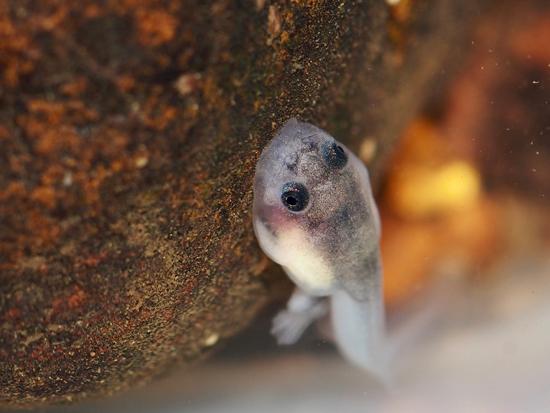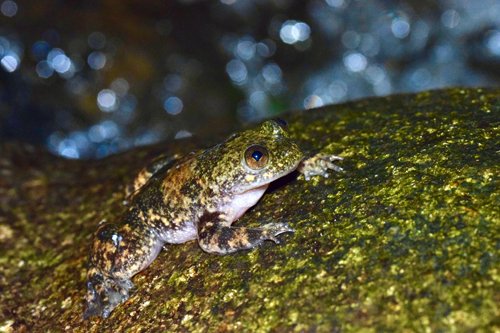An MNCN research team discover a new form of reproduction in amphibians

The variety in reproductive methods, evolved by amphibians over the course of years of evolution is the most diverse of the animal kingdom. Today, a team led by the National Museum of Natural Sciences (MNCN-CSIC) added a new mode of reproduction to the catalogue to describe how the Barbourula busuangensis reproduces, a primitive frog that lives in the Palawan archipelago, Philippines. It is considered a very evasive species that was first described by science exactly 100 years ago, but of which, little was known.
Fieldwork between 2018 and 2023 has allowed us to observe and record for the first time the reproduction of a rare Philippine frog.
Barbourula busuangensis is aquatic and lives in pebbly rivers with rapids. Between 2018 and 2023 the team was able to travel to develop their study of the species, but, according to Marta Miñarro, a researcher at the MNCN who lead the field work at the helm of the discovery: "Although we were able to study aspects of demography and behaviour in two populations of the species, it was extremely difficult for us to obtain data on their reproduction. After 5 years of observations and samples, we did not know what they were like, if they laid eggs, or if they grew from larvae, if there were any"
Different herpetological specialists have tried to understand how these frogs reproduce, and what little evidence there was seemed to indicate that it must be in a unique way. “With ingenuity and perseverance we managed to find two breeding sites deeply hidden in rock crevices, within a narrow tunnel system through which water flows. Once these spaces have been detected, using cameras equipped with a long endoscope, we tried to observe and record an adult defending its tadpole offspring for the first time” told the MNCN researcher Ignacio de la Riva.

According to a newly published article in Salamandra magazine, the tadpoles they discovered had very particular characteristics: they fed exclusively on the vitellus accumulated in its intestine and its mouth, which is not functional, it is surrounded by a large oral suction cup with which they adhere to the rock walls of the nest to avoid being swept away by the current. This combination of semi-caverniculate larvae, unstructured mouth for feeding, oral sucking, and parental care, constitutes a set of adaptations which conform to a reproductive method never before described in amphibians.
“We still lack knowledge surrounding other aspects of its reproduction, such as the type of mating and fertilisation, or the sex of the adult in charge of parenting, but this discovery demonstrates the relevance of field work in order to get to know and understand the biodiversity that surrounds us" wrote Patricia Burrowes, also of the MNCN.
The amphibian group shows enormous variety in the ways they reproduce.
The reproductive strategies of the amphibians
The majority of amphibians lay eggs, but viviparous species also exist. Both the fertilisation as well as the place and care, or lack thereof, varies in each group. There are species that abandon their eggs in a body of water or damp environment, and others that look after theirs until they hatch. In the majority of species, tadpoles are born and have to undergo a metamorphosis that turns them into miniature adults, while in others they are born fully formed. As such, amphibians are the class of vertebrates with the most diversity in methods of reproduction, with more than 74 methods having been described to date, to which we must now add the one found in Barbourula busuangensis. This number of strategies and combinations is an authentic display of the creativity and whimsy of evolution.
Date
Friday, 15 November 2024Publicado en
SalamandraInvestigador
Marta Miñarro Ignacio De la RivaReferencias
Miñarro, M., Burrowes P. A., Lansac, C., Afuang, L. & De la Riva, I. 2024. Mystery solved: unravelling the life history of the enigmatic and ancient Philippine frog, Barbourula busuangensis (Anura: Bombinatoridae). Salamandra







